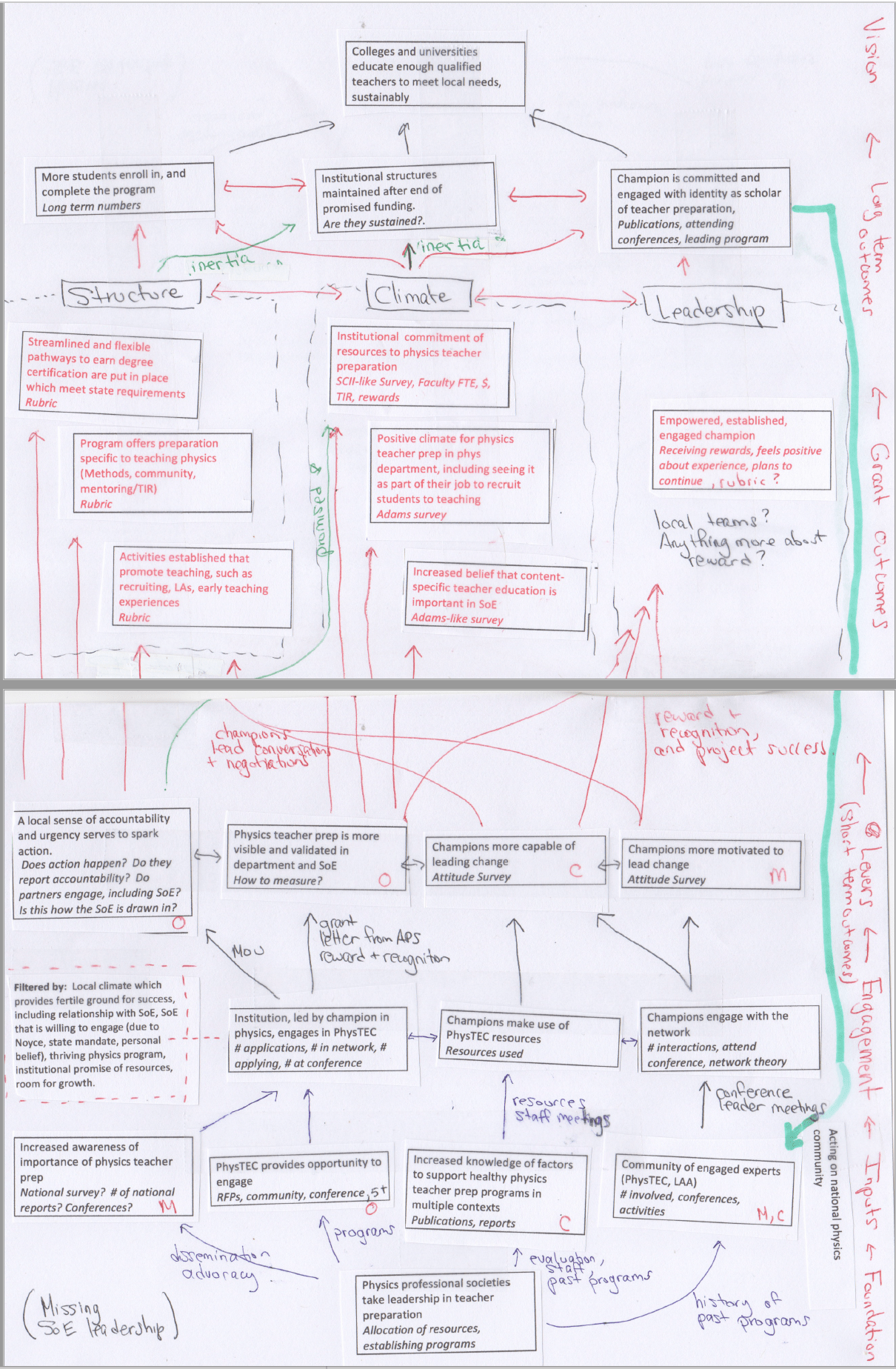
I’m Stephanie Chasteen, an external evaluator on NSF-funded projects aiming to improve STEM education at the university level. This is Part 1 of a 2-part series on Theory of Change. Today, I’ll share the process I use to help clients develop Theories of Change (ToC). Tomorrow, I’ll share how I’ve been able to work with an evaluation champion within the organization to develop organizational capacity in Theory of Change development.
The National Science Foundation (NSF) has required Theories of Change as part of many educational proposals for some time, but there has been quite a bit of confusion among my clients as to what exactly is meant by a ToC or why it would be useful.
Lesson Learned:
I’ve learned not to back down when a client doesn’t want to develop a ToC (or take the time to do it well). When I have not done so, target audiences and outcomes were usually muddy. One client fought me the whole way, feeling it was confusing exercise without practical value. Later, however, she related to me, “Now I know why you had me do that, and it was totally useful. Now I’m developing one on my own for this new project and it was so much easier.” Most clients who develop Theories of Change go on to create (very good!) ToCs to guide other projects, and this gives me pride.
Hot Tip:
Developing a Theory of Change is confusing the first time around. Emphasize with clients that boxes represent outcomes, not strategies. Get your hands dirty with post-it notes; write down outcomes, move them around, and ask questions about how they connect. (The image is our in-progress diagram; see tomorrow’s post for the final version.) Give clients permission to do it their way: The test of a good TOC is that it is useful, not that it is perfect or follows a prescribed model. My clients have been very creative in using color coding or organizational elements to help their diagrams.

Questions I like to ask are:
- How do you want the world to be different as a result of your project? (Project vision)
- Name a few changes that would need to happen to achieve your vision? (Long-term outcomes)
- What changes would need to happen to achieve those outcomes? (Short-term outcomes)
Thus, we essentially “work backwards” from the project vision. Don’t skimp on the project vision! It is such a valuable clarification and inspiration moment for most leaders.
During this process I keep my eye open for “miracles” – steps which seem to “magically” lead to the next step. A common example is “High quality materials are developed” and “People use those materials effectively.” Wow, magic! The missing steps might be “People find the materials and see that they are valuable” and “People learn how to use the materials.” Such insights lead to valuable additions to the project strategy.
Rad Resources:
- TheoryofChange.org and their examples
- EstherJames.com’s Tutorial: How to write a Theory of Change
- SMART goals
- Padlet for virtual sticky notes
- Theory of Change 3-minute video on YouTube is great for clients
Do you have questions, concerns, kudos, or content to extend this aea365 contribution? Please add them in the comments section for this post on the aea365 webpage so that we may enrich our community of practice. Would you like to submit an aea365 Tip? Please send a note of interest to aea365@eval.org. aea365 is sponsored by the American Evaluation Association and provides a Tip-a-Day by and for evaluators.

Can you share a little more about how/where you have used Padlet in your process? I’ve certainly used real sticky notes while working on TOCs, but have never gone the virtual route!
[Apologies if this is a duplication question. I tried to post it yesterday, but don’t see it showing up.]
Padlet is essentially virtually sticky notes. For me, I found it easiest to just use it as sticky notes and NOT try to draw the connecting arrows, which got messy and difficult. I also found it useful to work on physical sticky notes first and then put content into Padlet for me to work with the client on, but that isn’t a necessary first step. Either way, I was then able to move them around while in a virtual meeting with the client, either with them logged into Padlet, or screen sharing. I have also used Google Slides, one text-box serves as a sticky note, which is somewhat more familiar, and you can save “draft” versions by copying a slide and then starting fresh with a new version. The virtual route is never as good as the physical sticky notes, but it can at least get people thinking.
I like the tip about avoiding “miracles” in your theory of change. Good tips.